Entrepreneurship – How an unemployed history graduate changed her life by writing a guide about the villages she knew since she was a child
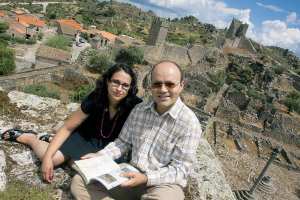
Photo courtesy of Expresso.pt
From the top of the Marialva Castle, that she knows in the palm of her hands, she goes in unraveling stories that time buried in the stones, not forgetting about the legend of the Lady of the goat’s feet. “I identify myself with castles. My mother was an elementary school teacher and instilled in me the passion for history” recalls Susana Falhas, author of the guide “Aldeias Históricas de Portugal” (Historic villages of Portugal), which led to two years of investigation, researching libraries and wandering around each village in the eye of a tourist. The result is a book that makes an extensive survey of the territory of historic villages, inviting the reader to “a well-deserved vacations, with a piece of the history of Beira Interior in the luggage”.
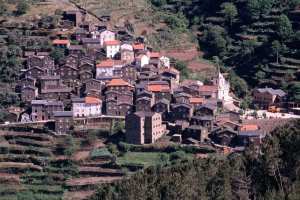
Piodão – The village which is inserted in the Serra do Açor, is known as the Christmas crib of the Beira Region. Photo courtesy of Expresso.pt
This passion, which dates back to her infancy, made Susana take a degree in History. In the nineties, when the official classification of historic villages appeared, she was dedicating herself to teaching. “I loved to teach, I always wanted to be a teacher, as my mother was. But life gives many twists and turns.” After four years teaching, she was pushed into unemployment by lack of available school to be placed in. “I was riding aimlessly for some time in thinking what would I do now?”.
Among her divagations, she became a Time-Share agent in Algarve. “I was having a hard time with no financial reward. One day I had an aha moment: why not come back to my region, in Beira, to promote the historic villages?”. Susana, which is from the council of Mêda, always had a soft spot for Marialva, and on the day of her marriage, she presented the invitees with a guided visit to the castle, wearing her wedding dress. “I felt that this was it, what I always had looked for was right here under my nose”.
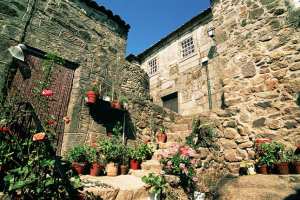
Linhares da Beira – Due to the atmospheric conditions, the village is now known as the Capital of Paragliding. Photo courtesy of Expresso.pt
The idea of creating a guide started to gain clarity. With the help of her husband, Serafim Faro, Susana went through of 570km of historic villages with a fine-tooth comb. “I went on to visit each and every one of them and it was a can of surprises.” She had a blast with the event of the recreation of the legend of the calf in Monsanto, in which the rancho das adufeiras (musical groups with popular roots which play the Adufe, an instrument of Arabian origin) follows in a procession until the castle to let go the vase of flowers in memory of the siege of the Moors. “But arriving to these villages we found that there wasn’t any useful information for the tourists, sometimes only a flyer from the Town Hall”, notes Serafim Faro.
“The villages are different but they have a common denominator which is that all of them underwent the tribulations of the Christian reconquer era”, explains the historian, giving evidence of the marks left by the Templars, which became holders of practically all Beira Baixa. The main concern was to give “simple and enjoyable information with scientific rigueur, because our history is very intricate”.
Supporting the local economy
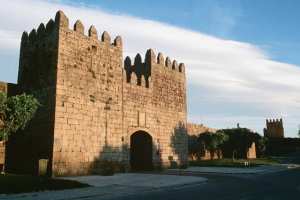
Trancoso – Is where the King Dom Dinis took a liking to the land, to the point of marrying there in 1282 with Lady Isabel de Aragão, the Holy Queen. Photo courtesy of Expresso.pt
While preparing the guide, the idea of creating discount coupons occurred. “I would see books with this concept – that seemed a valid one, and I thought: why not get two birds with one stone?” This objective led to the need to contact over two hundred regional companies, from hotels to producers of sausages. “I thought that it could be a good way to support the local economy. This region is being threatened by desertification.”
Launched in June 2010, the guide Aldeias Históricas de Portugal (Historic villages of Portugal) (Guide only in Portuguese, at the moment) was the first publication of Olho de Turista (“Tourist Eye”), company created by Susana Falhas and her husband, Serafim Faro. The name, which was one of the available names for registry, “seemed as if it was just waiting for us”. With the help of young graduates recruited from the Job Center, they promoted the Historic Villages on Facebook . “We must be creative since the project is 100% financed by us”.
With their headquarters in Mêda, the company offers various services in tourism, from cultural agendas to 3D promotional views, having already signed agreements with Spanish companies to bring foreign tourists to the Historic Villages.
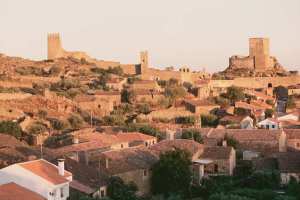
Marialva – The Count of Marialva left such a bad memory that the population put a curse on him. The visit to the castle requires a symbolic donation given in the Tourism booth. Photo courtesy of Expresso.pt
“It is important to instill the idea in the younger generation that instead of waiting for a job to come marching in the front door of their home accompanied with a brass band, they have the power to create their own jobs” concludes Susana Falhas. “The Beira Interior is a diamond in the rough and there is a lot to do. The secret is to see these valuable resources as an opportunity to create something different”.
12 Historic Villages categorized
The network Aldeias Historicas de Portugal (Historic Villages of Portugal) was created through a Government initiative in 1991 and includes 12 villages with this classification: Piodão, Linhares da Beira, Trancoso, Marialva, Figueira de Castelo Rodrigo, Almeida, Castelo Mendo, Sortelha, Belmonte, Castelo Novo, Monsanto and Idanha-a-Velha. These are all lands in the Beira Interior region, mostly along the frontier border with Spain, founded in an era prior to the own foundation of the Portuguese nation. The criteria of classification of the Historical Villages took into account the traditions and the richness of the patrimony, nevertheless most of these communities being villages today or even cities, like in the case of Trancoso. To note that Castelo Bom was initially integrated in this network, but who’s classification was later withdrawn.
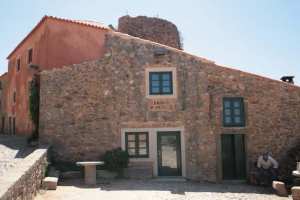
Castelo Rodrigo – The region is known for the production of almonds, and every year takes place the celebration of the almond blossom. Photo courtesy of Expresso.pt
The Program was created in the scope of the Second and Third European Structural Funds, that took place between 1994 and 2006, period of which the classified villages had their historical centers renovated. These interventions, which are supported by European Regional Development Fund, added to 44.6 million euros. In the end of 2007, the Association for the Touristic Development of Historic Villages of Portugal was created, integrating municipalities and private entities. This association is developing a marketing plan with the objective of promoting the Historical Villages also abroad, besides a series of events to take place along this year.
Article written by Conceição Antunes which was originally published in the Portuguese Newspaper Expresso dated June 18, 2011 and translated under permission by BestInPortugal. Photos courtesy of Expresso.pt and OlhodeTurista.pt.
